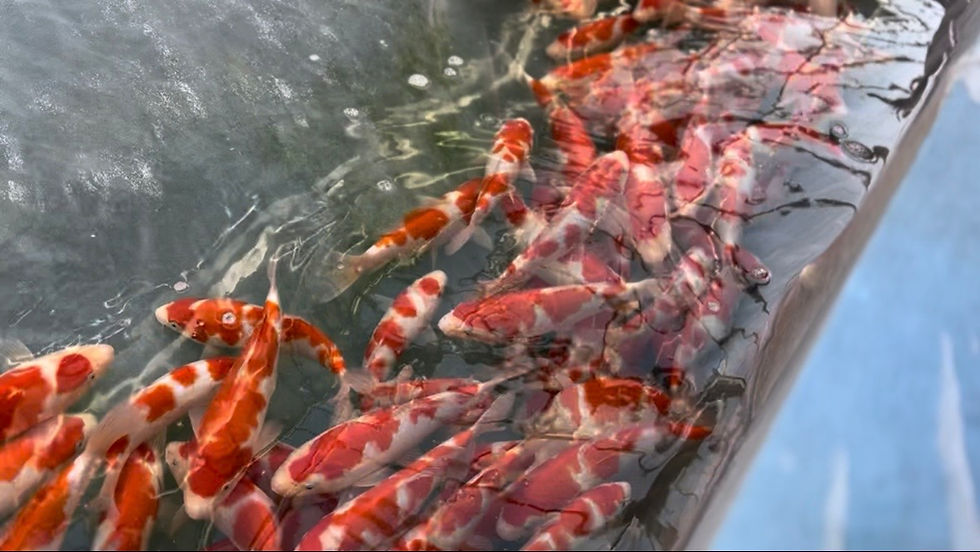Quarantine Tips for New Koi
- Tri-Star Koi
- 3 days ago
- 3 min read
By Tri-Star Koi
Bringing home a new koi is always exciting—especially when you've spent time picking out just the right one. But before you introduce your new fish into your main pond, there’s a crucial step that many hobbyists overlook: Quarantine.
At Tri-Star Koi, we quarantine every fish that comes in from Japan before it ever reaches our customers. Why? Because even the healthiest-looking koi can carry parasites or bacteria that could affect your existing pond. Here’s what we’ve learned from years of experience—and what you should know before adding any new koi to your collection. In addition to quarantine, all of our koi undergo a rigorous protocol and thorough testing for KHV (Koi Herpes Virus) to guarantee they are free from this deadly disease.
Why Quarantine Matters
Quarantining new koi isn’t just about protecting your current stock; it’s about giving the new arrival time to recover from the stress of shipping, adjust to your water parameters, and get properly observed before any introductions.
Fish coming from breeders, dealers, or even fellow hobbyists might be carrying pathogens that your pond hasn’t seen before. You might not see symptoms immediately, but diseases can surface days or even weeks after the koi has settled in. Additionally, the stress of travel can weaken their immune system, making them more vulnerable to illness.
How Long Should You Quarantine?
We recommend a minimum of 3 to 4 weeks. This gives you enough time to:
Monitor the fish for signs of illness or stress
Treat for any parasites (common after transport)
Gradually adapt the koi to your pond’s environment
If the koi shows any signs of illness, you'll be glad it’s isolated and not sharing water with your main collection.
What You Need for a Proper Quarantine Setup
You don’t need a full-blown pond, but your quarantine system should be clean, stable, and properly filtered. Here’s a basic checklist:
Tank or tub (300 gallons above depending on fish size)
Filtration (a sponge filter works well for smaller setups, but reccomend bio-filter)
Heater (to stabilize temperature if needed)
Aeration (koi need strong oxygen levels)
Cover or netting (koi can jump when stressed)
Test kits (ammonia, nitrite, pH, etc.)
Keep in mind, the cleaner and more stable your quarantine environment is, the smoother the transition for your new koi.
Observe, Treat, and Build Trust
Use the quarantine period not only to observe for health issues, but also to start building trust with your new koi. Feed lightly at first and gradually increase as the fish adjusts. Watch for signs of external parasites (flashing, rubbing), fin damage, or abnormal swimming.
When Is It Safe to Introduce to the Pond?
Only move your new koi once it has:
Shown no signs of illness for at least 2–3 weeks
Been eating well and acting normally
Passed any necessary treatments
Matched in water temperature and quality with the main pond
A slow temperature and water-acclimation process is key—sudden changes can shock the fish and undo weeks of good quarantine.
Final Thoughts
Quarantine might seem like an inconvenience, but skipping it can cost you much more in the long run. A well-executed quarantine protects your koi collection, gives your new fish the best start, and offers peace of mind. At Tri-Star Koi, it's a standard part of how we care for every imported koi—and it's something we encourage every hobbyist to take seriously.
If you ever have questions about setting up a quarantine system or need recommendations for treatments, feel free to reach out. We're here to help.
Stay safe, keep learning, and enjoy your koi!
— Marlon Ngo at Tri-Star Koi





